European microphones from the past I
Acos - AKG - Tesla - RFT - Geloso

 statcounter since 2005-10-21:
statcounter since 2005-10-21:
|
|
|
|
 |
|
|
|
Last Updated: 2017-01-01 |
|
 My fellow Dutch collector of vintage microphones, Marco van der Hoeven, has published this wonderful
book with lots of info and excellent photos of many vintage microphones, all from his personal collection.
My fellow Dutch collector of vintage microphones, Marco van der Hoeven, has published this wonderful
book with lots of info and excellent photos of many vintage microphones, all from his personal collection.
The book is a must for anyone who loves vintage microphones, it is bound, hard cover and printed
on thick, high quality paper. Click on the picture or
here to go to his website and order the book !
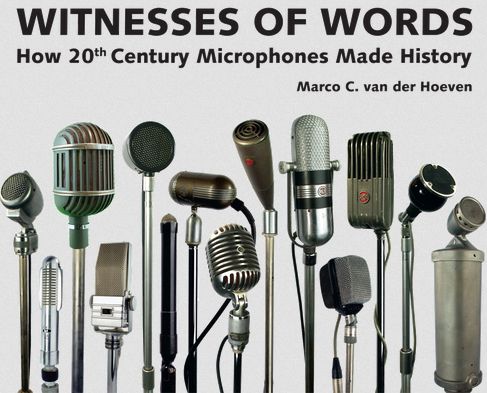
| Microphone: | Description: |
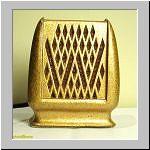
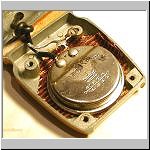
|
Acos There is no type on this small table mic, but inside is an acos element, so the mic is probably also an acos. See also the next item. |
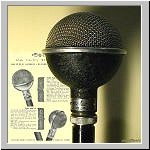
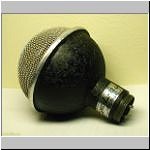
|
Acos MIC 22 Acos microphones were made by Cosmocord Limited in Middlesex (UK). This model 22 looks a little bit like the Ronette 088-u7, but the ball is slightly larger. More information on this mic (including the original advert) can be found on Emil Dudek's vintage technology site. The mic doesn't work. |
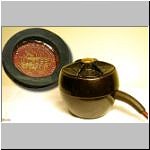
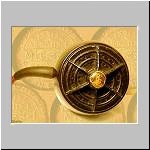
|
Acos MIC 33-1 Acos crystal microphone, working. |
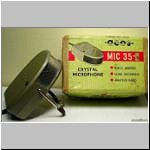
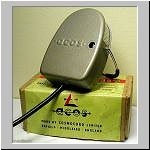
|
Acos MIC 35-2 Another Acos crystal microphone, for "public address, home recording and amateur radio". |
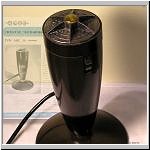
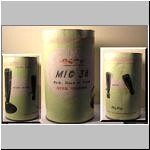 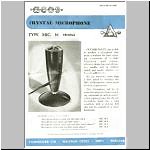
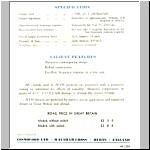
|
Acos MIC 36-4 Same top as the model 33. With table stand and switch. This Microphone will be of particular interest to home recording enthusiasts as well as professional engineers, since the die-cast microphone insert has a high sensitivity with a pick-up field that may be considered as omni-directional. |
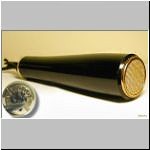
|
Acos MIC39 Dynamic microphone. Freq. range : 30 - 12KHz 1957 list price: f 30.00 |
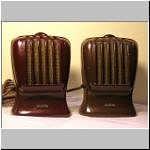
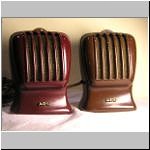
|
AEG Ela M-300 Two others, definitely AEG ! The one on the left has also been repainted by me, the other one has its original brown colour. Used in combination with the AEG or Telefunken KT 65 Magnetophon taperecorders, introduced in 1956. |
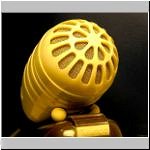
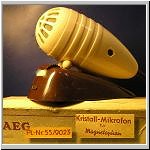
|
AEG 9023 Kristall-Mikrofon, around 1955. |
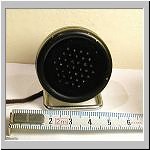
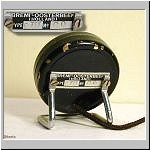
|
Bremi 6LU A very small crystal microphone from Holland. |
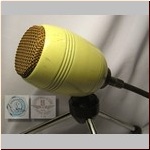
|
Elektrosignal s32-10 Dynamic (?) microphone from the Czech Republic. |
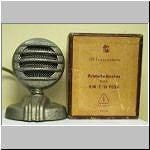
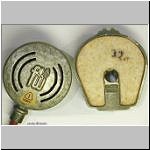
|
Funkwerk Leipzig 7055 Kristallmikrofon KM/T/ST 7055. Made in the DDR. The diameter of the top is only 5 cm. |
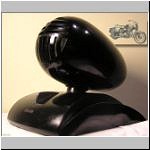
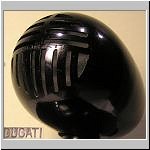
|
Ducati Big, heavy and beautifully streamlined microphone from the company better known of it's motorcycles. |
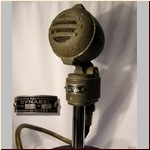
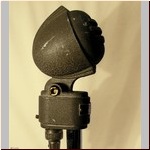
|
Dynabel 46a * * * * * French dynamic microphone, probably from the late 1940's. Made by "S.I.M.E.A. Paris", possibly the "Société Industrielle [de Construction] de Matériel Electro-Acoustique" ? Other models with the Dynabel name are the 45a and 47a. |
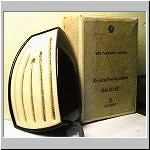
|
Funkwerk Leipzig Kristallmikrofon KM 8157. Another crystal microphone from Funkwerk Leipzig. Early sixties model ? |
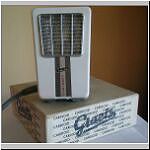
|
Graetz. A German mic. It seems the company tries to tell us it is a cardiod microphone. Probably made by AKG under the Graetz logo (I have seen an identical model with the AKG logo) [see: food and art of the microphone design] |
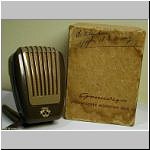
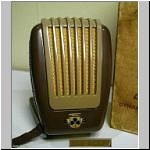
|
Grundig gdm10 No. 46744. |
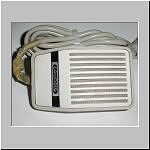
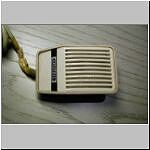
|
Grundig gdm311. A microphone that came with e.g. the Tk-17 and many others. |
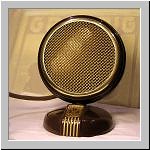
|
Grundig gcm3 or gkm17. This is a very common microphone, but what sets it apart is the fact that this is a condensor microphone - not very common for a microphone for the consumer market. The english type is GCM 3, the german name is GKM 17. The model GKM 7 is similar (but rarer), it has a round foot and the grundig emblem in the middle of the grid. Being a condensor microphone, it required a 100 V polarisation (supplied by some model Grundig tape recorders). From what I have heard, these microphones did a good job, much better than the average crystal mic or even dynamic mic from the same era ! |
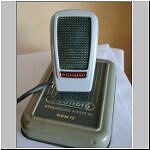
|
Grundig gdm15. Note the original metal box ! |
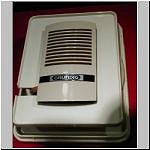
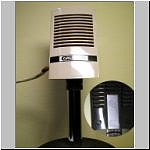
|
Grundig gdm16. In mint condition. Probably it has never been used and never been outside the box before. |
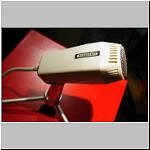
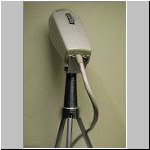
|
Grundig gdm316. Dynamic. |
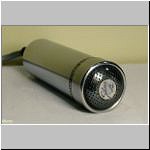
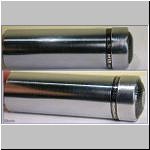
|
Geloso M18. A small dynamic mic. |
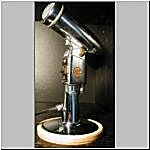
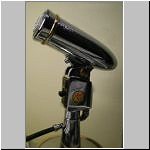
|
Geloso M60A. A nice mic with stand and on-off switch. Made in Italy. See the geloso story. |
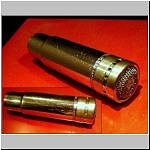
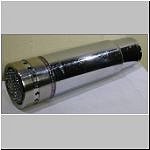
|
Geloso M68. |
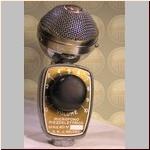
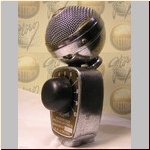
|
Geloso 401. Early (c. 1950) Geloso piezo (crystal) microphone with volume control. |
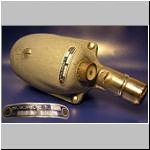
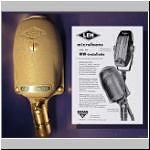
|
LEM 307. * * * * Dynamic microphone from France, 1950s. LEM is still active, see the LEM webpage. |
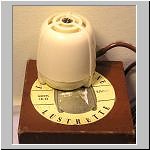
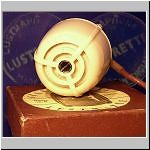
|
Lustraphone 'Lustrette' LD/61. * * * Dynamic microphone from the UK. Table top design. |
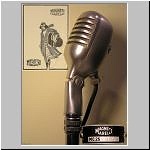
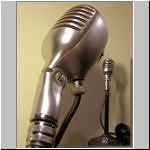
|
Magneti Marelli MC25. * * * * * The company is (like Ducati) better known from the automotive industry and racing world. But there was a time when they made these beatiful microphones. They also made a model MC26 and some other unidentified models. |
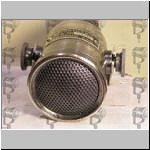
|
Melodium 75a. * * Made in french. The older models had horizontal slits, this has a similar grille as the model 76a. Probably early 1960's. |
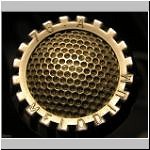
 |
Melodium 76a. * * * A french microphone (possibly from the mid sixties ?). Nothing is standard on this mic. The connector, the stand, the neck, it does not fit any other microphone (; |
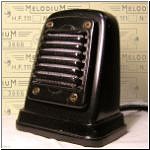
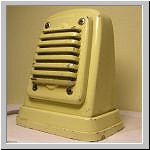 |
Melodium hf111a. * * * * An impressive dynamic table microphone ! |
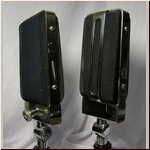
|
 Memoton. * * * * * I traded this mic with a fellow collector and he thought is was of Dutch origin. |
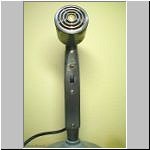
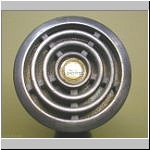
|
Mymex 802DT. The µ Mymex is a Swedish microphone, made in Stockholm. Probably from 1960. |
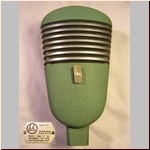
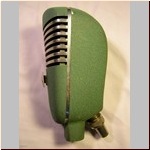
|
 Mymex 81DT.
Mymex 81DT. A large and heave µ Mymex dynamic microphone. |
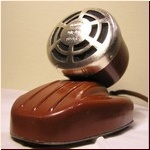
|
Octava MD41. Russian microphone from 1959. |
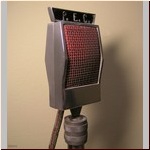
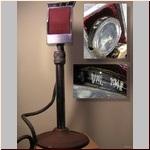
|
P.E.C. (Piezo Electric Crystal ?) * * * * * Only once thing I know about this microphone, and that is the production date of the crystal element (4-VIII-1942). The element looks like it has a diaphragm on two sides. There are some other mics that are from the same date-range and there are some similarities with this mic. One of these mics has the name "Piezo Electric Crystal" on the element-grill. Maybe that's what the letter PEC mean. These other mics have at one time been described as 'German', but why would a German maker use the english term (in 1942). So maybe it's origin is Dutch, who knows ??? |
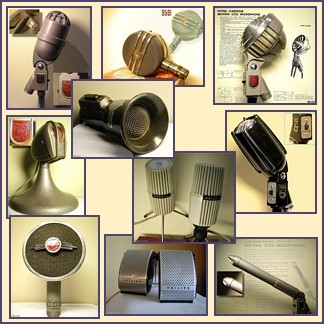
|
Philips page
Philips el3750. Philips el3750. Philips el3753. Philips el3757. Philips el3781 & el3791. Philips el3782. Philips el3799. Philips el3925/00. Philips el3994. Philips el6011. Philips el6020. Philips el6021/50. Philips el6030. Philips el6040. Philips el6100. Philips 9549. Philips 9561. Philips 9564. |
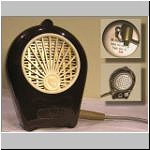
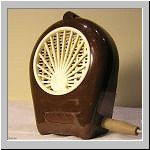
|
Quellux. This mic came with the quelle - simonetta taperecorders from the quelle mail order company. It is similar to (and made by) Roka. The element was made by electronics company Dr. Steeg & Reuter from Bad Homburg. |
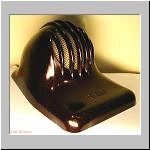
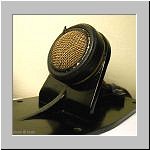
|
RFT KM/T 7153. Another East German table microphone in beautiful red-brown plastic. RFT stands for "Radio Fernseh Technik", this was not a single company but a group of companies all with the name RFT. Of course it was a VEB (Volkseigener Betrieb), in this case VEB Funkwerk Leipzig. |
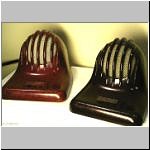

|
RFT KM/T 7153. Another one (in a lighter shade of red) on the left, and a black one on the right. |
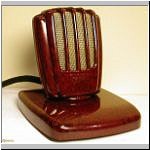
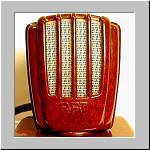
|
RFT model unknown. A similar East German table microphone, again in beautiful red-brown plastic. The element is the same as in the previous RFT mics. Also the same nylon/plastic is used for the grille |
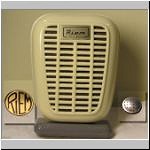
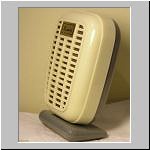
|
Riem mod.250. Crystal microphone from Milano, Italy. |
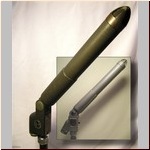
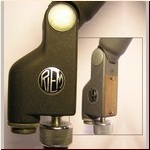
|
Riem. * * * * * RIEM (Rappresentanze Industrie Elettrotecniche Milanesi) made some beautiful microphones in the 1950's. Or maybe they had them made, because this model could have been made by Philips. Or, at least, it was heavily inspired by the Philips el6040. There are some subtle differences however, e.g. the Riem is 1 cm shorter ! |
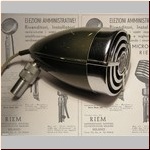
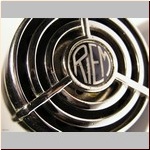
|
Riem. * * * * * Very rare Riem bullet or torpedo microphone. |
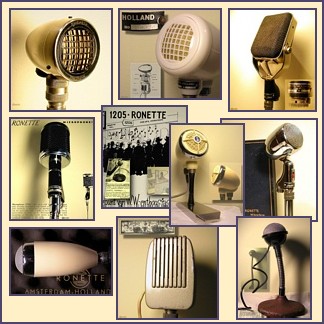
|
Ronette page
Lugavox. Metz T1. Ronette b110. Ronette 44 Ronette HM7. Ronette 088 "Soundball". Ronette R510. Ronette RFCL5. Ronette R572 L.(Merula) Ronette S742. Ronette ZBD3. Ronette GS210 "wide range". Ronette unknown model. Ronette MKS2. Schumann (Ronette) unknown model. Hand Microphone No 3 with Ronette element. Summum Piëzo Summum Piëzo SM7. Summum Piëzo SB3. Telefunken dx12(?) - Amroh H. Telefunken mm65 (Ronette mm65) Terta. |
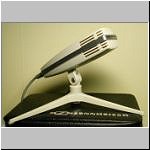
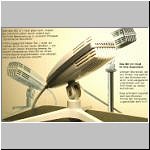
|
Sennheiser MD 511 HLM. An omni-directional dynamic microphone, targeted at the lower end of the market (home recordings). Nevertheless, someone said of this mic: "It sounds pretty darned good (in a good sounding room) on horns". Freq. range : 50 - 12KHz Output level: 0.25 mV/µ Bar (800 ohm); 1.25 mV/µ Bar (25 kohm); 0.12 mV/µ Bar (200 ohm). 1973 |
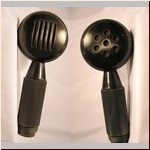
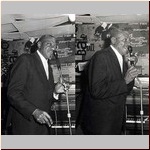
|
(Sennheiser) Labor W MD4. Before the company was named Sennheiser (after its founder) it was called Labor W (Laboratorium Wennebostel). This was a very popular model, I believe it is still used to mike guitar amps. It was built from 1950 till 1973, which says enough about the quality! |
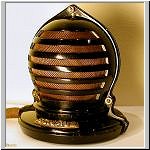
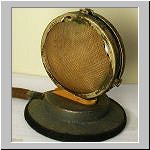
|
Schaub. Unknown type. |
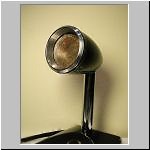
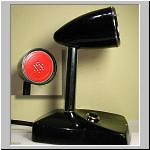
|
(probably) STC. Unknown type, probably from the 1960's. The element inside has the id "stc 20043". It looks a little bit like this STC M916. |
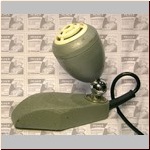
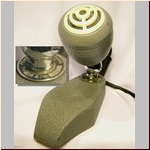
|
Peiker PM4. * * * * Kristallmikrofon, early 1950's. |
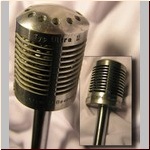
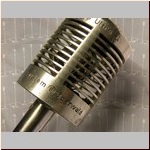
|
Beerwald Ultra II. See also the Steeg & Reuter and Reuter entries. My remark that these models were very similar turned out to be not completely true. To my surprise, this Beerwald Ultra II is similar in shape, except it is only 1/3 of the size of the Steeg & Reuter !! From what is left of the inside, it looks like this was one of the so called dual diaphragm crystal microphones. |
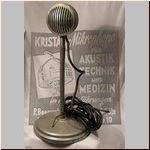
|
Beerwald Rex. * * * |
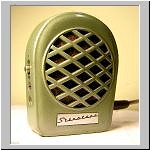
|
Stenotape. (made by Peiker as Peiker PM 23) There was an American company Stenotape that produced taperecorders. In fact this was the american branch of Geloso, so it is a little bit puzzling why this mic was made by Peiker and not by Geloso. Peiker is still existing, see for some history (and the connection with the Beerwald microphones) at their website |
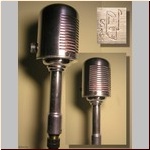
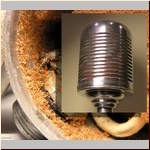
|
Steeg & Reuter. * * * * * There were two microphone manufacturers located in the city of Bad Homburg. One was Beerwald, the other was Steeg & Reuter. This company also was active making optical instruments. In 1951 this microphone was described as a neuzeitliches, hochwertiges Kristall-Mikrofon so it was made around 1950. Beerwald made a microphone that was very similar (Ultra II), coincidental ? Of course, the foam that held the element inside, was almost completely disintegrated. |
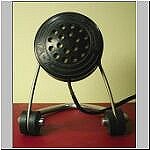
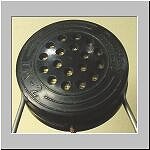
|
Tandberg TW2. Tape recorder microphone, see Tandberg Model 4 |
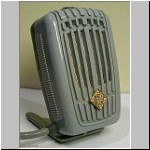
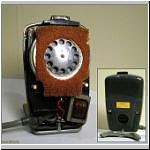
|
Telefunken d9a. No. 200562. Note the extra input at the backside of this microphone. Date: around 1958. |
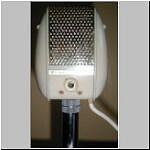
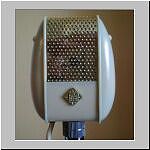
|
Telefunken d11. A microphone that can be switched between 'M' - 'S' |
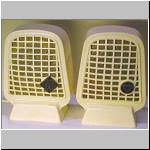
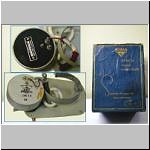
|
Telefunken dx12(?) - Amroh H. It seems that Telefunken not only used the production line of AKG, but also of the Dutch Ronette company. This one is a thinly disguised Ronette 44. The model on the right is labeled Amroh (a Dutch company that also made a tape recorder). The top element in the right picture is from the Amroh, it has the same 'filtercel' element as the Terta. The element seems to be in excellent shape (but obviously is not working in this state!). The bottom element (from the Telefunken) looks like it is older, it has stamped on it "Ronette - Amsterdam". |
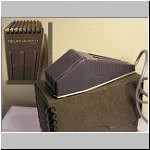
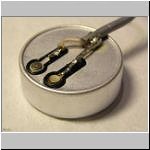
|
Telefunken mm65 (Ronette mm65) Another example of a Ronette microphone that is labeled as a Telefunken. A small crystal element, inside a cheap looking (and probably it was cheap!) plastic housing. Probably early 1960's. |
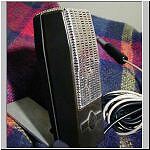
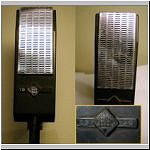
|
Telefunken TD20. (2x) These microphones came with the Telefunken 200 taperecorder. Also made by AKG (?). The one on the left looks like it is named "YD20", but the "Y" really is a "T" ! |
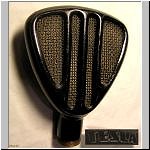
|
Tesla. |
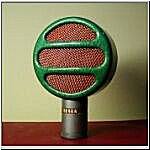
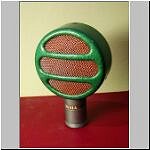
|
Tesla AMK102. |
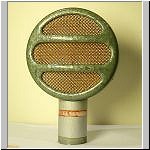
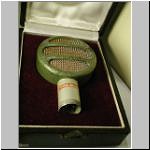
|
Tesla AMK102. Another one, not as nice as the first one. |
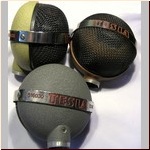
|
Tesla 516030. Three Tesla 516030's crystal microphones, the little brothers of the 516040. |
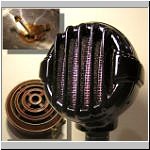
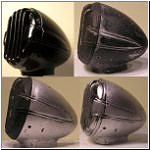
|
unknown. * * * * * A unknown model, never seen before. The shell looks like that of the Astatic jt-30 but slightly larger. It looks like it was handmade. Of course it is a crystal mic, the element is there but the crystal itself has totally disintegrated. Probably this mic was made in Germany, or maybe French. Why French ? Well, the thread for the screw is totally non standard ... ;) I got this one for a few euro's, but it came in a very bad state. Couldn't resist to give it some new paint. |
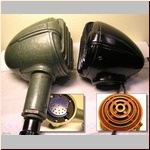
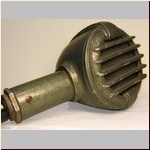
|
unknown. * * * * * Another example of this unknown model. This one is in better condition. The element is different. I would love to get the element out, that might lead to the manufacturer. But the element is glued in a rubber casket and it's better to leave that intact. On second thought, it must be of German origin. |
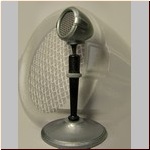
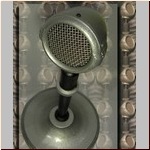
|
unknown. * * * * * This one is probably of the same manufacturer as the previous two unknown models. The element is missing. The overal condition of the shell and the stand was pretty poor, but some sanding and painting helped to give it a fresh look. I am pretty satisfied with this restoration project, but would still like to name a proper name for this model. On a third though, I think the origin of these mics lay somewhere in eastern Germany. |
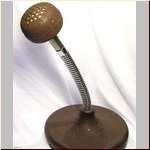
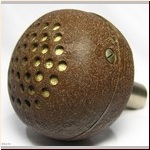
|
unknown. * * * * * Unknown, but probably Dutch. I wouldn't be surprised if there is a Ronette filtercel inside, but the shell isn't easy to open. |
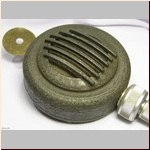
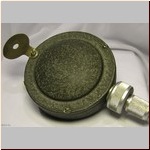
|
unknown. * * * * Unknown, but probably Frech. Again, maybe there is a Ronette element inside, it looks not unlike the Herbay Jr models. |
This is my own totally un-scientific rating of the rarity of the different microphones. It is based on (a) what is offered on vending sites, (b) what is in other collections, (c) how much info can be found with Google and other search engines. A model gets only the top rating if I have never seen or heard of another one of this model in existence.
Of course, it does not necessarily mean that the rarest items are much more expensive than the more common models!
| Rarity: | Description: |
| * | Easy to find, e.g. at any time on ebay |
| * * | Not too hard to find |
| * * * | Not seen too often |
| * * * * | Pretty rare |
| * * * * * | Rare ! |
| * * * * * | Mega Super Ultra Rare ... at least that is what I think ! |
|
|||
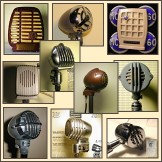 |
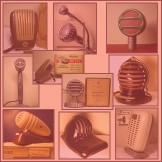 |
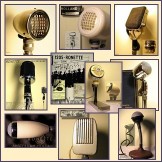 |
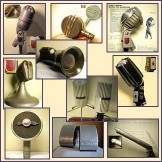 |